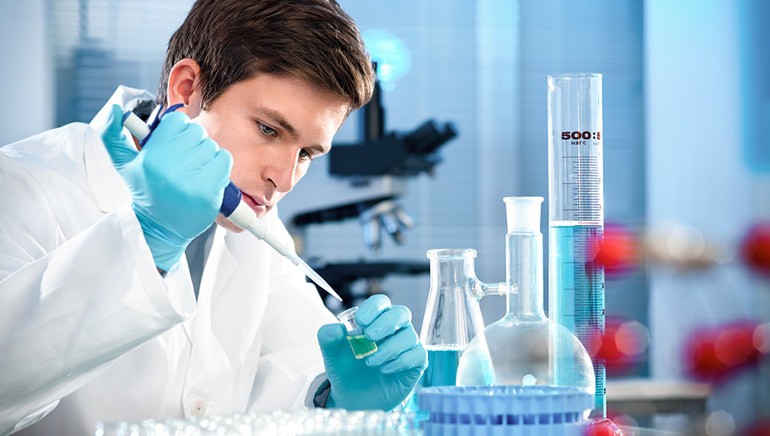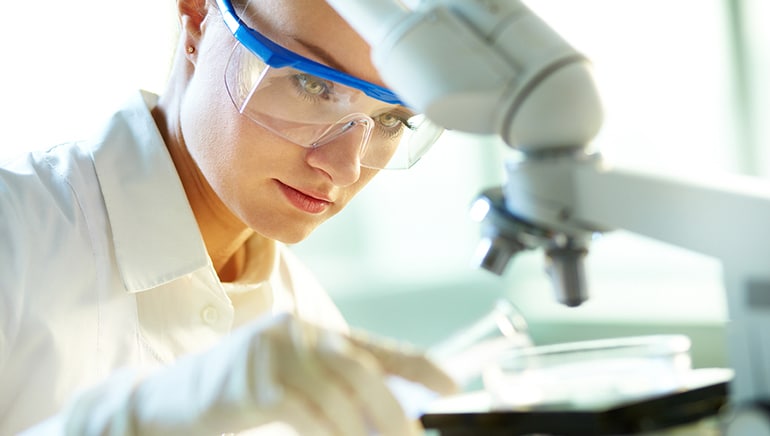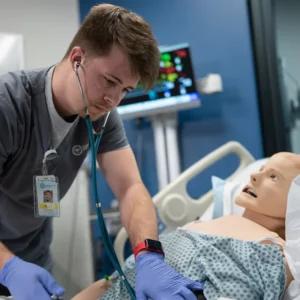
Definition
Pharmacology, a term derived from the Greek word pharmakon (“poison” in classic Greek, “drug” in modern Greek) is a branch of biology and medicine that is concerned with the study of drug action 5. Specifically, pharmacology is the examination of the interactions between a living organism and chemicals that affect normal or abnormal biochemical functions. This includes drug composition, synthesis and drug design, molecular and cellular communication, molecular diagnostics, interactions, toxicology, chemical biology, therapy, as well as medical applications and anthipathogenic capabilities. While pharmacology is a biomedical science primarily concerned with research, discovery and characterization of chemicals and their biological effects on cellular and organismal function, pharmacy1 deals with the application of the principles learned from pharmacology in a clinical setting with patients. Whereas pharmacy focuses on direct-patient care, pharmacology is rather science-oriented. Furthermore, pharmacology is experimental and does not necessarily have therapeutic purposes. Even though they are not synonymous, both terms are often used interchangeably.
Antiquity to Middle Ages
Pharmacological knowledge has been recorded for thousands of years across the world. The earliest known documentation of medical substances is the prehistoric Sushruta Samhita, and Indian Ayurvedic treatise from the 6th century BC. Additional examples of ancient pharmacological records are the various papyri from ancient Egypt that date back to the 16th century BC. The Ebers papyrus, for instance, lists the extensive pharmacopia of that civilization: beer, turpentine, myrrh, juniper berries, poppy, lead, salt and crushed precious stones. It also mentions animal products like lizard’s blood, swine teeth, goose grease, ass hooves and various excreta. Other ancient medical manuals include the Shennong Bencao Jing, which comprised forty volumes describing several thousands of prescriptions, from the Han Dynasty compiled in the 1st century BC. Interestingly, the eastern herb Artemisia annua L. (wormwood), used in China for millennia to treat fevers, is the source of the modern drug qinghaosu, which is nowadays believed to be a promising modern anti-malarial compound. There are also various path-breaking Greek pharmacotherapeutic treatises from the 4th century BC. Among those, Dioscorides’ five volume De Materia Medica (Latin translation) which he wrote in the 1st century BC and is commonly considered the oldest and most influential work in the history of (Western) pharmacology. Further early works of clinical pharmacology are Avicenna’s The Canon of Medicine, Peter of Spains’s Commentary of Isaac, and John of St Amand’s Commentary on the Antedotary, which were all written in the Middle Ages. The traditional remedies described in these volumes usually consisted of complex concoctions of certain herbs and minerals, often with dubious efficacy and occasional toxicity. Over the centuries, however, an increasingly scientific approach to the isolation of drugs from natural products was taken. The ancient discipline of Materia Medica which focused on understanding the origin, preparation and therapeutic application of medicinal compounds, evolved into a more experimental and scientific branch of knowledge which concentrated on understanding the biological effects of these chemicals. For example, morphine was isolated from the opium poppy (Papaver somniferum) in the early 19th century.
Modern Era to 20th Century
This paradigm shift in the understanding of curative treatments propelled the onset of modern pharmacology. Pharmacology as we know it today became a scientific discipline in the early 19th century, when a number of physiologists began to perform pharmacologic studies. In 1809, François Magendie studied the effect of nux vomica (a strychnine-containing plant drug) on dogs, and demonstrated that the spinal cord was the site of its convulsant action. Approximately 20 years later, Friedrich Wohler synthesized urea from inorganic substances and consequently refuted vital force theory. In 1842, Claude Bernard discovered that the arrow poison curare interrupts the stimulation of muscle by nerve impulses at the neuromuscular junction. The first university chair in pharmacology was established in 1847 at the University of Dorpat in Estonia (then part of Russia), with Rudolf Buchheim as the appointed professor of the department. One of his students, Oswald Schmiedeberg, was going to be known as the founder of modern pharmacology. He worked at the University of Dorpat under Buchheim and eventually succeeded him in 1869. He became professor of pharmacology at the University of Strassburg three years later, receiving substantial funding from the government in the form of an impressive institute of pharmacology. He revealed that muscarine evoked the same effect on the heart as electrical stimulation of the vagus nerve in 1869 and introduced urethane as a hypnotic in 1885. Furthermore, he published Outline of Pharmacology in 1885 and is regarded as largely responsible for Germany’s preeminence in the pharmaceutical industry prior to World War II. The turn of the century marked the inception of pharmacology as a scientific discipline in the United States. The first chair in pharmacology in this country was established in 1890 at the University of Michigan by John Jacob Abel who had trained under Schmiedeberg. Abel’s major accomplishments include the isolation of epinephrine from adrenal gland extracts (1897–1898), the isolation of histamine from pituitary extract (1919), and the preparation of pure crystalline insulin (1926). Moreover, his student Reid Hunt discovered acetylcholine in adrenal extracts in 1906. In 1908, the American Society for Pharmacology and Experimental Therapeutics (ASPET) was founded. These days, every college of medicine or pharmacy in the United States has a pharmacology department. The 20th century witnessed a steady increase in the number of new drugs that would improve the human condition tremendously. It is hard to imagine our world without Ibuprofen, Penicillin or vaccines. Not very long ago, large numbers of people perished prematurely or lived a life full of pain due to infections or defects. The common flu alone killed hundreds of millions; the 1918 flu pandemic killed 50 to 100 million people – three to five percent of the world’s population – across the world. Infectious diseases like polio or syphilis that resulted in grave illness or even death are now preventable through vaccines (polio) or curable via antibacterials (syphilis). Chemotherapy can treat cancer effectively by destroying cancer cells. Likewise, there has been great progress in the treatment of chronic conditions like diabetes, hypertension, and depression.
Careers in Pharmacology
Despite the great achievements in the last century, we are still facing big challenges at the beginning of the 21st century. For instance, AIDS, malaria and tuberculosis are still endemic in many parts of the developing world and have devastating consequences for the local populations. Yet, these challenges also pose opportunities for those who are interested in pursuing a career in pharmacology. Pharmacists, pharmacy technician, biochemists and biophysicists, and medical scientists are those who advance the field of pharmacology.
Pharmacist
 First of all, there are pharmacists, who are responsible for dispensing prescription medications to patients and advising them regarding the safe use of those medications. Furthermore, they may also perform immunizations, oversee the medications given to patients, as well as inform them on leading a healthy lifestyle and undergoing health and wellness screenings. Pharmacists typically work in pharmacies (including those in grocery and drug stores) as well as in hospitals and clinics. To become a pharmacist2, one has to obtain a Doctor of Pharmacy, which is normally a 4-year doctorate program. In addition, they have to pass two exams to become licensed.
First of all, there are pharmacists, who are responsible for dispensing prescription medications to patients and advising them regarding the safe use of those medications. Furthermore, they may also perform immunizations, oversee the medications given to patients, as well as inform them on leading a healthy lifestyle and undergoing health and wellness screenings. Pharmacists typically work in pharmacies (including those in grocery and drug stores) as well as in hospitals and clinics. To become a pharmacist2, one has to obtain a Doctor of Pharmacy, which is normally a 4-year doctorate program. In addition, they have to pass two exams to become licensed.
Pharmacy Technician
 Pharmacists are assisted by pharmacy technicians, whose responsibilities include measuring amounts of medication, packaging and labeling prescriptions, processing payments and insurance claims, entering patient information, and answering phone calls. Pharmacy technicians work under the supervision of pharmacists, who must review prescriptions before given to patients, but in most states they are authorized mix some medications and call physicians for prescription refill authorizations. While pharmacy technicians only require a high school diploma or GED, many obtain a certificate or degree from a pharmacy technology program, especially if they are in a state where passing an exam and formal education/training are obligatory.
Pharmacists are assisted by pharmacy technicians, whose responsibilities include measuring amounts of medication, packaging and labeling prescriptions, processing payments and insurance claims, entering patient information, and answering phone calls. Pharmacy technicians work under the supervision of pharmacists, who must review prescriptions before given to patients, but in most states they are authorized mix some medications and call physicians for prescription refill authorizations. While pharmacy technicians only require a high school diploma or GED, many obtain a certificate or degree from a pharmacy technology program, especially if they are in a state where passing an exam and formal education/training are obligatory.
Medical Scientist
 Whereas pharmacists and pharmacy technicians are the face of pharmacology and interact with patients directly, medical scientists work behind the scenes and conduct research aimed at improving overall human health. They also mostly work in laboratories and offices. Medical scientists conduct studies to investigate diseases (including prevention and treatment), develop instruments for medical applications, analyze medical samples and data regarding causes and treatment of toxicity, pathogens or chronic diseases, standardize drugs for mass manufacturing, collaborate with other health care professionals and apply for funding. Clinical pharmacologists, for example, are concerned with the research, development, and testing of drugs. Medical scientist3 must have a Ph.D. in biology or a related life science (some also have a medical degree).
Whereas pharmacists and pharmacy technicians are the face of pharmacology and interact with patients directly, medical scientists work behind the scenes and conduct research aimed at improving overall human health. They also mostly work in laboratories and offices. Medical scientists conduct studies to investigate diseases (including prevention and treatment), develop instruments for medical applications, analyze medical samples and data regarding causes and treatment of toxicity, pathogens or chronic diseases, standardize drugs for mass manufacturing, collaborate with other health care professionals and apply for funding. Clinical pharmacologists, for example, are concerned with the research, development, and testing of drugs. Medical scientist3 must have a Ph.D. in biology or a related life science (some also have a medical degree).
Biochemist and Biophysicist
 Similarly, biochemists and biophysicists conduct research to understand the intricacies of human biology. They study the chemical and physical principles of living things and of biological processes, such as cell development, growth, and heredity. They normally work in laboratories and offices, while conducting experiments and analyzing results. Biochemists and biophysicists4 need to have a Ph.D. and many start their career while holding postdoctoral research positions. In some instances, bachelor’s and master’s degree holders qualify for some entry-level positions in biochemistry and biophysics.
Similarly, biochemists and biophysicists conduct research to understand the intricacies of human biology. They study the chemical and physical principles of living things and of biological processes, such as cell development, growth, and heredity. They normally work in laboratories and offices, while conducting experiments and analyzing results. Biochemists and biophysicists4 need to have a Ph.D. and many start their career while holding postdoctoral research positions. In some instances, bachelor’s and master’s degree holders qualify for some entry-level positions in biochemistry and biophysics.



